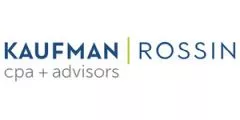Designing energy-efficient buildings for governments or non-profits? Your projects may qualify for this tax incentive.
Architecture and engineering firms responsible for the design of energy-efficient buildings owned by government agencies or tax-exempt organizations may benefit for the commercial building energy-efficient tax deduction under Internal Revenue Code (IRC) Section 179D.
The 179D tax deduction is a federal tax incentive that can help taxpayers reduce their taxable income and ultimately lower their tax bill. However, many taxpayers, including architecture and engineering firms, miss out on this deduction because it can be technical and is not thoroughly understood. Further, few accountants and tax professionals have the engineering background needed to help taxpayers benefit.
Read on to learn more about the 179D tax deduction, including what types of projects qualify, what eligibility criteria you need to meet, and how to claim this valuable incentive.
What is the 179D tax deduction worth?
Originally established by the Energy Policy Act of 2005 and permanently codified in 2020, the 179D tax deduction was enhanced by the Inflation Reduction Act (IRA) of August 2022, making it even more valuable for designers of green buildings. Among the key enhancements, the deduction amount was significantly increased, and buildings designed for most tax-exempt and tribal organizations were added to the list of eligible projects.
Architects and engineers designing energy-efficient buildings for the government or for non-profit organizations may be entitled to a special tax deduction of up to $5.36 per square foot for buildings placed in service in 2023 and up to $5.65 per square foot for those built in 2024.
How architects and engineers can qualify
To qualify for the 179D tax deduction, architecture and engineering firms must be responsible for the design of energy-efficient systems implemented in a new or renovated building owned by a government agency or a tax-exempt organization. Being responsible for the design is generally interpreted as creating the technical specifications for the implementation of energy-efficient systems.
The qualifying energy-efficient systems of a building include:
- The building envelope
- The HVAC system
- Lighting
- Service hot water systems
It's important to note that being responsible for the installation, repair, or maintenance of these systems is not enough to qualify as the designer and be eligible for the deduction.
Buildings that typically qualify for 179D tax deduction
Buildings owned by government or tax-exempt entities that may qualify for the 179D tax deduction include:
- Public or private schools
- Administrative offices
- Community colleges
- Universities
- Airports
- Port terminals
- Community centers
- Courthouses
- City halls
- Libraries
- Hospitals
- Treatment centers
How to claim the 179D deduction
A Section 179D study is required to determine deduction eligibility. The study involves a few steps:
- Create a detailed energy model of the building to compare the building's energy and cost performance to a standard reference building.
- Calculate the deduction based on the energy cost savings achieved.
- Conduct an on-site physical inspection to verify the energy efficient systems in the building.
The IRS requires that a professional engineer (PE) licensed in the state where the building is located provides documentation certifying that the property meets the Section 179D requirements. The PE prepares the certification report, which the architect or engineering firm can then use to claim the deduction on their tax return.
Architects or engineers claiming the deduction must also request an allocation letter from their client. This letter will assign either the full or partial deduction to the architect or engineer as the designer of the energy-efficient systems.
The 179D tax deduction offers a significant opportunity for architects and engineers who work with clients' eligible projects. To most effectively capitalize on this opportunity and navigate its complexities and compliance requirements, contact a trusted tax advisor with experience in this area. Kaufman Rossin's tax team includes professionals with engineering backgrounds who can help you understand the Section 179D provisions and maximize available tax incentives.
The content of this article is intended to provide a general guide to the subject matter. Specialist advice should be sought about your specific circumstances.



